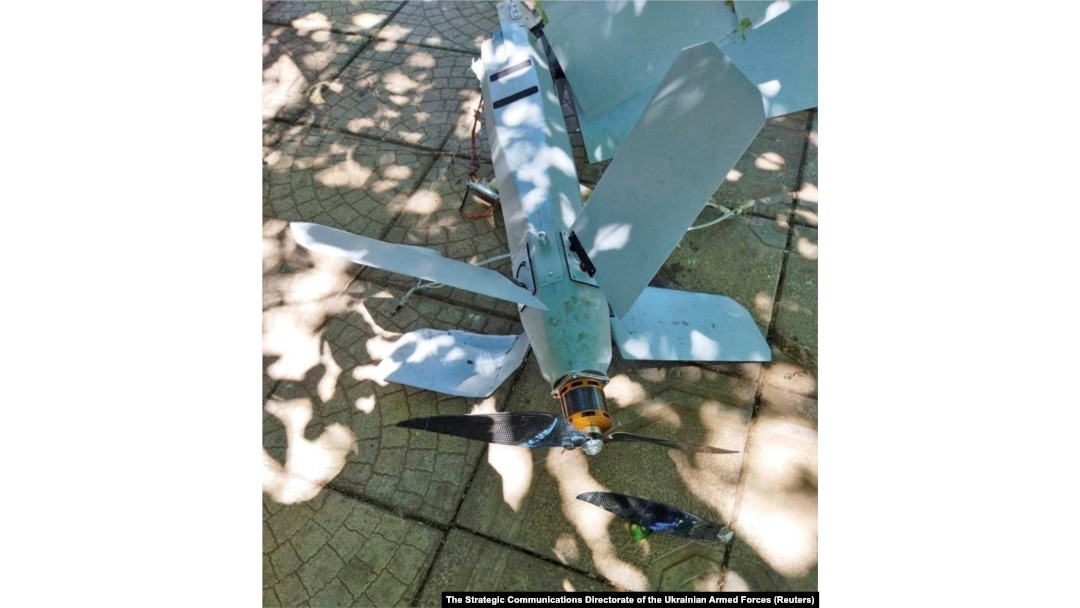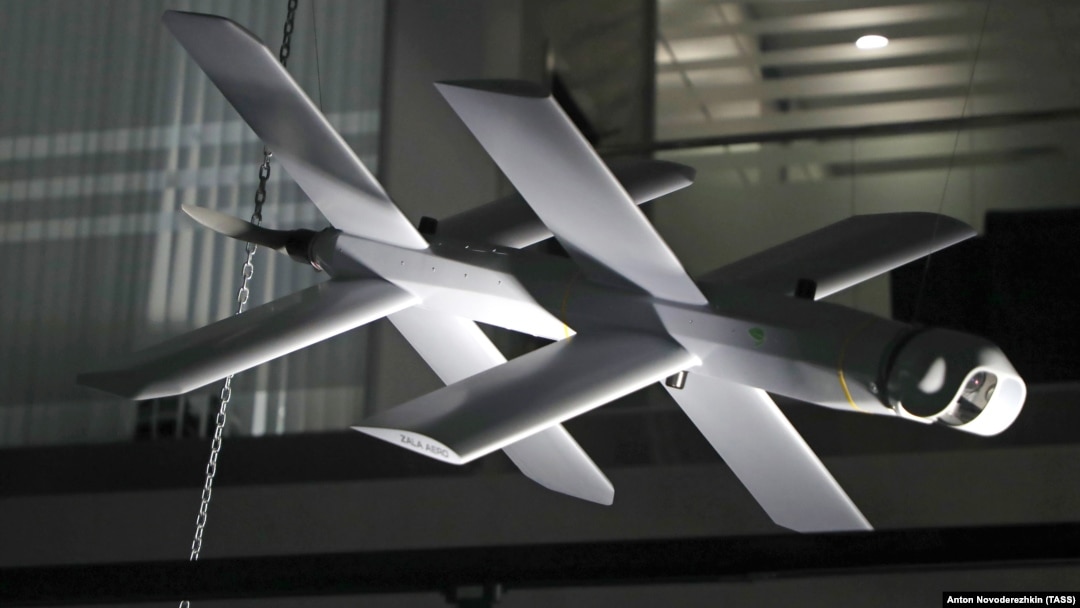Russia’s ZALA Lancet drones have emerged as one of the biggest dangers faced by Ukrainian forces amid Kyiv’s ongoing counteroffensive, and frontline troops say use of the drones has ramped up in recent months.

The tail section of a Lancet that was reportedly shot down above Ukraine’s Zaporizhzhya region in July 2022.
Bohdan, an artillery crewman, told Reuters, "Earlier, in spring, they were not using Lancets as often as they are now. Damn, they use them against us very often.
'Even yesterday, there was a report there were three Lancets flying over, searching for us,” he said while standing in a forest in the Donetsk region.
Lancets are X-winged suicide drones controlled by pilots who guide it to targets through real-time video transmitted from the nose of the drone. The weapons are launched from a small catapult and can stay aloft for around 40 minutes. The Russian-made drones were introduced in 2019 and first seen in combat in Syria.

A ZALA Lancet drone on display at an arms fair near Moscow in June 2019.
The latest iteration of the drone has a range radius of more than 40 kilometers, meaning it can strike targets far beyond the front lines, where high-value missile systems and radars are often stationed. The newest Lancets can reportedly carry a warhead of up to 5 kilograms.
Both Ukrainian and Russian forces now frequently use metal netting to surround howitzers and other weapons in an effort to stop loitering munitions from striking valuable hardware.
An unidentified armored vehicle with wire mesh, apparently to protect against loitering munitions.
Numerous videos posted by pro-Russian sources show Lancets striking high-value targets, including a German Leopard tank, worth several million dollars, and French Caesar self-propelled guns. One Caesar was filmed flipping at high speed after its driver apparently swerved to avoid being struck by an incoming Lancet.
According to open-source intelligence website Oryx, the increased use of Lancets -- which reportedly cost $35,000 each -- is likely due to “extensive losses” of Russia’s attack helicopters, leading Russia’s Defense Ministry to push to “massively expand” production of the latest version of the kamikaze drone.
A Ukrainian self-propelled howitzer surrounded by wire netting in the Donetsk region on June 20.
Yuriy Sak, an adviser to Ukraine's defense minister, acknowledged to Reuters that the drones have caused problems for Ukrainian forces.
"Every day we shoot down at least one or two of these Lancets," he said. "But it's not a 100 percent interception rate, unfortunately."
A small pusher propeller minimizes the Lancet’s heat signature, making it difficult to intercept with missiles.
Some videos show Ukrainian soldiers attempting to shoot down the drones with small arms, with some success. Sak says a Lancet flies “at 100 kilometers per hour, so shooting it down with small arms is not an easy challenge."
Ukraine has called for Western allies to provide Kyiv with more “radar-equipped automated anti-drone guns, as well as electronic warfare systems” that could stop incoming Lancets.


